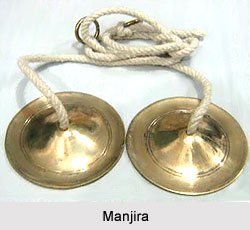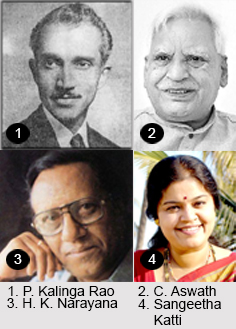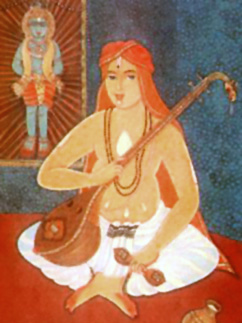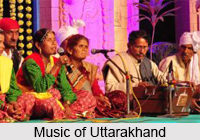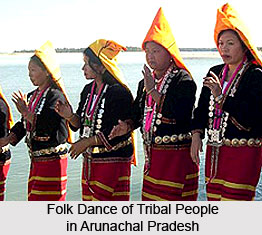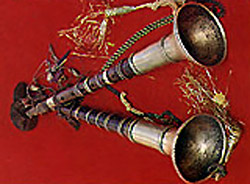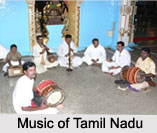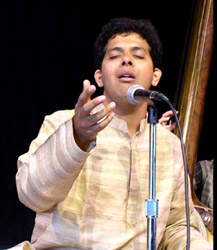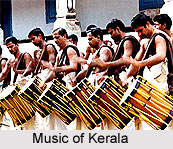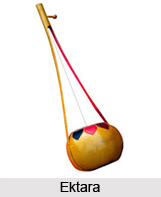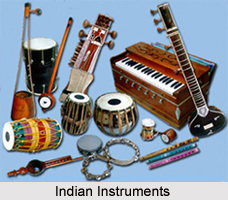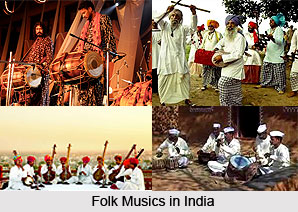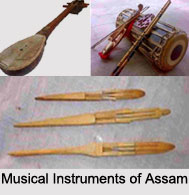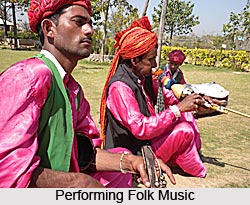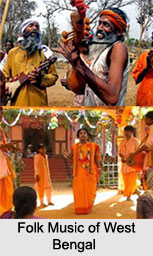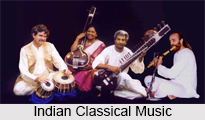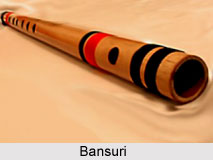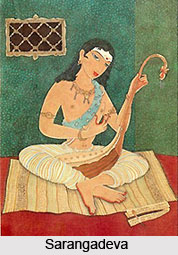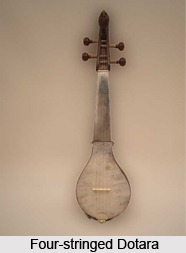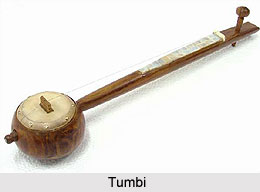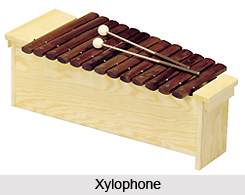Introduction
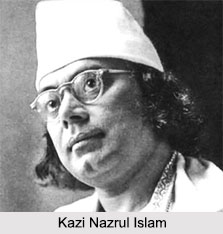 Nazrul Geeti refers to the songs written and composed by Kazi Nazrul Islam, who is the national poet of Bangladesh and an active revolutionary of Indian Independence Movement. The words "Nazrul Geeti" mean music of Nazrul. Nazrul Islam wrote almost 4000 songs, which are equally popular all around India and Bangladesh. Nazrul Geeti has recently been translated and recorded in Oriya language as a studio album.
Nazrul Geeti refers to the songs written and composed by Kazi Nazrul Islam, who is the national poet of Bangladesh and an active revolutionary of Indian Independence Movement. The words "Nazrul Geeti" mean music of Nazrul. Nazrul Islam wrote almost 4000 songs, which are equally popular all around India and Bangladesh. Nazrul Geeti has recently been translated and recorded in Oriya language as a studio album.
Origin of Nazrul Geeti
Nazrul Islam started showing his poetic and musical skills from a very tender age. Finally, he started writing songs when he was the member of a Leto Group (Folk Musical Group). Soon he became an expert in composing songs and setting them on tunes by following his uncle Kazi Bazle Karim and a leader of the Leto Group. Nazrul"s participation in this group was extremely significant in shaping and enhancing his musical career. Later, when Nazrul was serving as a Havilder in Karachi Barrack under Bengal Regiment, then he met Satish Kanjilal, who was a school teacher of Searsolo School. Being an expert in Hindustani Classical Music, he gave Nazrul lessons on Classical music. With the help of it, Nazrul was able to work on his knowledge on music. As a result of which, he composed several songs, which are purely based on ragas. Some songs on ragas are slightly deviated from the pure form of raga.
Themes of Nazrul Geeti
According to the themes, Nazrul Geeti can be divided in four groups- Revolutionary Mass Music, Bhakti Geeti, Ghazal and Ragasrayi Songs (songs based on Ragas):
Revolutionary Mass Music: It is the patriotic songs of Nazrul which are highly motivational with powerful words and striking tunes. They were widely used during the Indian Independence Movement and at Bangladesh Liberation war.
Bhakti Geeti: Krishna Bhajans and Shyama Sangeet of Nazrul together cater to the Bhakti Geeti portion. They are all devotional songs.
Ghazals: Kazi Nazrul Islam was the pioneer of the Bengali Ghazals based on the form of Persian Ghazal on the theme of love. It was the grand introduction of Islam to the traditional Bengali Music.
Ragadrayi: These songs are purely based on ragas with the themes of love and nature. In some songs of this branch, Nazrul sometime brought certain deviations in the pure form of the raga.
Musical Styles of Nazrul Geeti
Songs of Nazrul Islam can be divided into four groups- Revolutionary Mass Music, Bhakti Geeti, Ghazal and Ragasrayi Songs (songs based on Ragas). Nazrul learned Arabian and Persian language during his childhood, as a result of which, some of his poems and songs have Urdu, Arabian and Persian words. The themes of the songs are based on revolution, devotion, love, nature, patriotism etc.
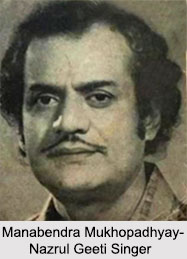 Revolutionary Mass Music: Patriotic Nazrul Geeti songs are extremely motivational in nature with strong and powerful words. The words express the result of extremities on everything; it also deals with conservatism. The songs help to observe life in a wider parameter of philosophy and spirituality. The lyrics of the songs are extremely provoking, which express the sense of freedom by each of them. Though the songs were highly criticized, was also praised for its straightforwardness and courage.
Revolutionary Mass Music: Patriotic Nazrul Geeti songs are extremely motivational in nature with strong and powerful words. The words express the result of extremities on everything; it also deals with conservatism. The songs help to observe life in a wider parameter of philosophy and spirituality. The lyrics of the songs are extremely provoking, which express the sense of freedom by each of them. Though the songs were highly criticized, was also praised for its straightforwardness and courage.
Some of the Patriotic Nazrul Geeti songs are:
"Mayer Deoya Mota Kapad"
"Abonato Bharat Chahe Tomare"
"Dhanya Amar Desh"
"Mago Tomar Bhabna Keno"
"Urdho Gogone Baje Madol"
"Shadhinata Hinatay Ke Banchhite Chay"
"Shikal Para Chhal Moder Ei"
"Bharat Amar Bharat Amar"
"Bande Mataram Bole"
"Atito Gourabbahini"
"Amra Sakti Amra Bal"
"Bolo Bhai Maabhoi"
"Karar Oi Louho Kopat"
"Jago Anashan Bandi"
Bhakti Geeti: Nazrul Islam composed several devotional songs, which are based on Lord Krishna, Goddess Shyama Kali etc. The songs are typically known as Bhajans and Shyama Sangeet. Some of the notable songs of this type are- "He Gobindo Rakho Chorone", "Gangane Krishna Megh Dole", "Jago Jogmaya Jago Mrinmoyee", "Amar Kalo Meyer Payer Tolaye" etc.
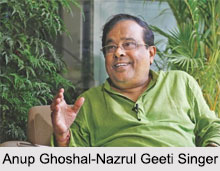 Ghazal: Bengali Ghazals were the innovation of Nazrul Islam, which was the grand introduction of Islam to the traditional Bengali Music. Most of his Ghazals were moulded into the form of Persian Ghazal based on the theme of love. Some of the songs of this type are "Paradeshi Priyotomo", "Tomarei Ami", "Sedin Nishithe", "Gagane Pabane" etc.
Ghazal: Bengali Ghazals were the innovation of Nazrul Islam, which was the grand introduction of Islam to the traditional Bengali Music. Most of his Ghazals were moulded into the form of Persian Ghazal based on the theme of love. Some of the songs of this type are "Paradeshi Priyotomo", "Tomarei Ami", "Sedin Nishithe", "Gagane Pabane" etc.
Ragasrayi Songs: Ragasrayi songs are purely based on Indian Ragas. In some cases, Nazrul Islam deviated slightly from the pure form of the Raga. The themes of the songs are based on nature and love.
Examples of Ragasrayi Nazrul Geeti
Nazrul Islam composed Ragpradhan or Ragasrayi songs covering most of the Indian Ragas. Some of the songs with the name of the Raga, which they are based upon, are given below:
"Piyu Piyu Birohi Papiya Bole" (Lalit Raag): This song is kind of a lamentation where the poet"s grief has been symbolized by a bird, who is in deep sorrow.
"Kaberi Nodi Jole Ke Go Balika" (Karnati Samant Raag): Here the poet addresses a beautiful woman, who has come to Kaveri River to take bath.
"Shaon Asilo Phire" (Kazi Karfa Raag): This song is about monsoon season. The word "Shaon" means the month of Srabon. The poet welcomes the srabon month.
"Jaha Kichu Mamo Aache Priyotamo" (Sindhu Bhairavi Raag): This song is based on love theme. He is addressing her beloved calling "Priyotamo".
Some other popular Ragpradhan Nazrul Geeti songs are:
•"Jharo Jharo Bari Jhare Ambar Byapiya" (Sudh Sarang Raag)
•"Aar Kothai Lukabi Shyama" (Bageshri)
•"Bonpathe Ke Jaye" (Chandrakaush)
•"Aajo Kande Kanone Koyeliya" (Kedar)
•"Kohite Nari Je Kothaguli" (Bhupali)
•"Kalo Bhramar Elo Go Aaj" (Pilu)
•"Nayan Mudulo Kumudini Haye" (Todi)
•"Nishi Nijhum Ghum Nahi Aashe" (Bihag)
•"Phire Nahi Ele Priyo" (Nat Malhar)
•"Rimjhim Rimjhim Jhore Sawan Dhara" (Mishra Malhar)
•"Shapone Eshechilo Mridu Bhashini"( Bhairavi)
•"Tarun Ashanto Ke Birohi" (Chandni Kedar)
•"Udar Ambar Darbare Tori Proshanto Probhat Bajaye Bina" (Darbari Todi)
•"Pronomi Tomaye Banodebata" (Durga)
Other Notable Nazrul Geeti Songs
"Mayer Deoya Mota Kapad": In this song, Nazrul Islam talks about the clothes made in India. He motivates everyone to wear these clothes and reject the clothes imported from outside the country.
"Dhanya Amar Desh": Here the poet talks about his country India and offers prayers to her.
"Mago Tomar Bhabna Keno": This song shows the mother of the nation to be tensed about the impacts of the British Empire. So, the poet tells her not to worry because her sons and daughters will fight against the British to bring back independence.
"He Gobindo Rakho Chorone": Here Nazrul Islam is addressing Lord Krishna to keep him on Krishna"s feet. In this song, he offers prayer to Krishna to always give blessings on them.
"Gangane Krishna Megh Dole": Here the poet sees "Krishna Megh" (black clouds) on the sky and he symbolizes it as Lord Krishna in them.
"Jago Jogmaya Jago Mrinmoyee": Here the poet calls Goddess Durga by her another name Mrinmoyee to evoke her.
"Gagane Pabane": Here the poet is talking about the nature. The word "Gagan" means sky and "Paban" means air.
"Patha Chalite Jodi Chakite": This song is purely based on the theme of love. Here the poet is addressing his beloved.
"Pashaner Bhangale Ghum": The word "Pashan" means relentless. Here an unmerciful person is awakened from sleep. So the poet is asking why he has been awakened.
"Kaberi Nodi Jole Ke Go Balika" (Karnati Samant Raag): Here the poet addresses a beautiful woman, who has come to Kaveri River to take bath.
"Shaon Asilo Phire" (Kazi Karfa Raag): This song is about monsoon season. The word "Shaon" means the month of Srabon. The poet welcomes the srabon month.
"Jaha Kichu Mamo Aache Priyotamo" (Sindhu Bhairavi Raag): This song is based on love theme. He is addressing her beloved calling "Priyotamo".
•"Nishi Nijhumo Ghumo Nahi Ashe"
•"Kemone Kohibo Priyo"
•"Amaro Noyone Noyono Rakhi"
•"Hoimantika Eso Eso"
•"Ami Jaar Nupurero Chondo"
•"Patha Chalite Jodi Chakite"
•"Boron Korechi Tare Shoi"
•"Aajo Kande Kanone Koyeliya"
•"Bholo Bholo Bholo Maan"
Nazrul Geeti Singers
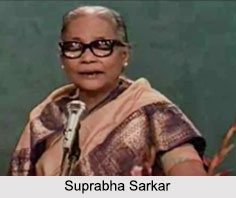 Nazrul Geeti or the songs of Nazrul Islam are equally popular in India and Bangladesh. There are almost 4000 songs, which have been sung by several popular singers around these two countries. Nazrul Geeti songs have even recently been translated and recorded into Oriya language as a studio album. The translated songs have been sung by Namrata Mohanty. In India Anup Ghoshal, Manna Dey, Suprabha Sarkar, Manabendra Mukhopadhyay are the most popular Nazrul Geeti singers among other; from Bangladesh Firoza Begum is the most prominent persona of this genre.
Nazrul Geeti or the songs of Nazrul Islam are equally popular in India and Bangladesh. There are almost 4000 songs, which have been sung by several popular singers around these two countries. Nazrul Geeti songs have even recently been translated and recorded into Oriya language as a studio album. The translated songs have been sung by Namrata Mohanty. In India Anup Ghoshal, Manna Dey, Suprabha Sarkar, Manabendra Mukhopadhyay are the most popular Nazrul Geeti singers among other; from Bangladesh Firoza Begum is the most prominent persona of this genre.
Some Notable Nazrul Geeti Singers
Some of these Nazrul Geeti singers and their contributions are provided in brief below:
Suprabha Sarkar: Suprabha Sarkar is one of the leading exponents of Nazrul Geeti songs. Her association with Nazrul Islam dates back to 1939 during the making of N.T. film "Sapurey". Nazrul Islam was extremely impressed with Suprabha Sarkar"s work, which later resulted in the popular "Kaberi Nodi Jole Je Go Balika" on January 1941. In her last years of life, she served as Nazrul Geeti trainer. She was also appointed in All India Radio as a Nazrul Geeti trainer.
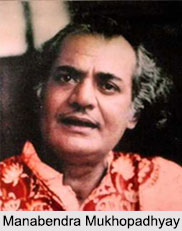 Manabendra Mukhopadhyay: Manabendra Mukhopadhyay is one of the great scholars of Nazrul Geeti songs. Being inspired from his uncles, he got trained in Nazrul Geeti by Angurbala Devi and Indubala Devi, who were directly schooled in Nazrul Geeti. He has sung several popular Nazrul Geeti songs, which are mostly based in Indian Ragas. Some of such songs are-"Bagichay Bulbuli Tui", "Musafeer Mochh Re Ankhi Jol", "Akul Holi Keno", "Britha Tui Kahar Pare", "Aamar Nayone Krishno Nayantara", "Arunkanti Ke Go" etc.
Manabendra Mukhopadhyay: Manabendra Mukhopadhyay is one of the great scholars of Nazrul Geeti songs. Being inspired from his uncles, he got trained in Nazrul Geeti by Angurbala Devi and Indubala Devi, who were directly schooled in Nazrul Geeti. He has sung several popular Nazrul Geeti songs, which are mostly based in Indian Ragas. Some of such songs are-"Bagichay Bulbuli Tui", "Musafeer Mochh Re Ankhi Jol", "Akul Holi Keno", "Britha Tui Kahar Pare", "Aamar Nayone Krishno Nayantara", "Arunkanti Ke Go" etc.
Purabi Dutta: Purabi Dutta is considered to be the authentic singer of Nazrul Geeti songs. She was associated with All Indian Radio for various programs in her earlier days of life. She has sung several popular Nazrul Geeti and dedicated her entire life in teaching the songs of this genre. She was also attached to Bengal Music College. She was a contemporary of Pandit Jnanprakas Ghosh, Biman Mukhopadhyay, Manabendra Mukhpadhyay and Adhir Bagchi.
Anup Ghoshal: Anup Ghoshal is another exponent of Nazrul Geeti who belongs to the golden age of Nazrul Geeti. He did his masters and Ph.D from Rabindra Bharati University. His thesis was entitled as "Nazrul Geeti- Roop O Rashanabhuti".
Indrani Sen: Indrani Sen is a popular Rabindra Sangeet and Nazrul Geeti singer. She was trained in Nazrul Geeti by Purabi Dutta. She has her own music school named Disha, where she teaches Nazrul Geeti along with other genres of music.
Some other notable Nazrul Geeti singers are Nilufar Yasmin, Dhiren Bose, Dhirendra Chandra Mitra etc. Some other singers from Bangladesh are Alaka Das, Kamal Dasgupta, Ferdous Ara, Sadya Afreen Mallick etc.
